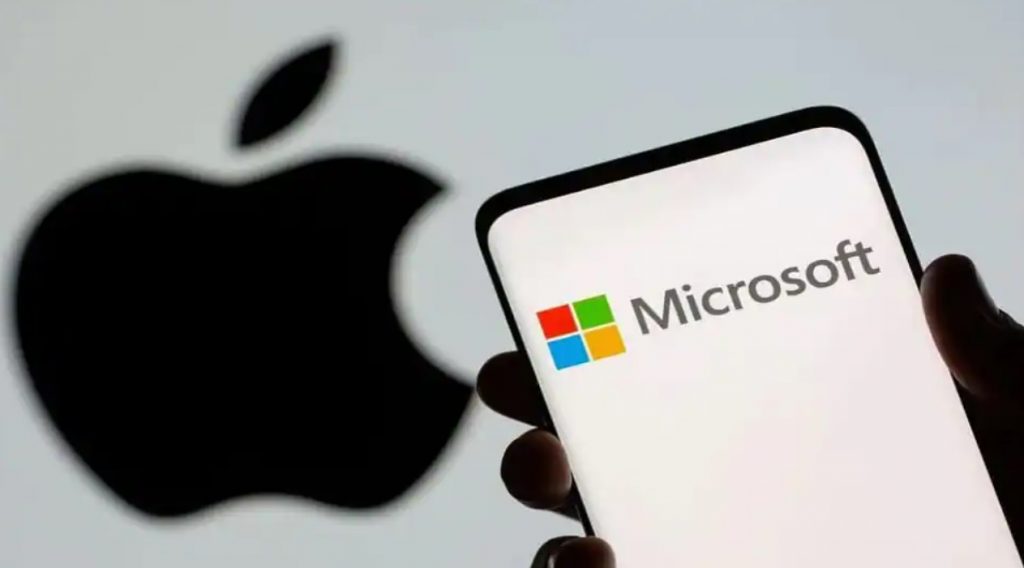
New Delhi: Apple, established by Steve Jobs, Steve Wozniak, and Ronald Wayne, is the world’s second most valuable firm, trailing only Microsoft.
However, the tech titan is repeating the mistakes made by Nokia, the Finnish telecoms and information technology corporation.
Slowing sales, controversy, and a lack of innovation might all lead to Apple’s demise.
Since its humble beginnings in a garage in 1976, the company has touched the lives of hundreds of millions of people.
Apple rocketed to success in the late 1970s and early 1980s, but faltered after Jobs and Wozniak left.
In the late 1990s, the firm was revitalised, and Jobs was reinstated as CEO.
Jobs revolutionised the path of personal computing through two spells at Apple and then launched a revolution to the mobile market with his passion for simple design and marketing prowess.
He oversaw the introduction of the iPod, and then the game-changing iPhone, which put the internet in people’s pockets. Because of its quasi-religious following, it was dubbed the “Jesus phone.”
However, it lost a visionary leader when he died in 2011 from a rare form of pancreatic cancer.
Jobs died just one day after Cook unveiled a new iPhone at a grandiose event that had become Jobs’ signature.
Perhaps not surprisingly, the new device received mixed reviews, with many criticising it for not being a significant upgrade over the previous edition of one of the most popular consumer items in history.
Despite the loss of the man who served as Apple’s primary product designer, marketing genius, and unrivalled salesman, the company still confronts issues.
Smartphones running Google’s Android operating system are gaining market share, and there are questions about what Apple’s next big thing will be.
While repositioning the company’s legendary marketing infrastructure to defend the brand is the company’s greatest issue, experts believe Cook is likely to stick to previous battle strategies at this key point.
Nokia, a Finnish telecoms network equipment manufacturer, has been unable to keep up with changing consumer demands and market realities.
The iPhone, according to common belief, is the cause of Nokia’s demise, but the business also lost its lustre in the basic phone market, which had been a steady source of earnings and promised years of robust development in emerging economies.
After Stephen Elop joined as CEO from Microsoft, the business abandoned its own Symbian smartphone operating system in 2011 in favour of the highly untested Windows Phone rival.
According to the book by Risto Siilasmaa, Nokia’s chairman, who joined the company’s board in 2008, the company’s decline was partly due to a lack of entrepreneurial leadership and an inability to face bad news.
In 2013, Microsoft paid 5.44 billion euros ($7.2 billion) for Nokia’s phone business and patent licences, then sold them to Foxconn three years later for $350 million.
Nokia’s demise and Apple’s emergence as a smartphone behemoth are inextricably linked.
Apple, which has nearly always shattered Wall Street projections during the global recession, is beginning to lose its image of invincibility.
Apple’s revenues dropped $6 billion in the fiscal fourth quarter as a result of ongoing worldwide supply chain issues. In less than a year, the business has missed Wall Street targets twice.
Tim Cook, the company’s CEO, may now have to worry more about the economy, new launches, and the whims of finicky customers.
The breakthrough smartphone that gives the Apple brand a particular sheen is a very cyclical product. Every time a new version is released, buyers flock in droves, camping out overnight at stores and crimping supplies.
Every year, as over 100 million consumers decide when to upgrade to a new model, whether to buy now or wait for a better but similar-priced phone, the device’s popularity has heightened conjecture around it.
According to a recent report, Apple is unlikely to reach manufacturing objectives for its new iPhone before the holidays due to a global electrical chip shortage.
Apple is being chastised and sued for its tight control of its “environment,” which includes everything from iPhone hardware to the apps that can be downloaded.
In the face of a saturated market more than a decade ago, it became reliant on client upgrades.
In the wake of the coronavirus outbreak, many have put off replacing their phones in favour of repairing their older devices.
In the United States, the business has launched a ‘Self Service Repair’ programme, which sells equipment and components to consumers who want to repair damaged iPhone 12 or 13 models.
It will begin by concentrating on sections that are more vulnerable to harm, like as screens, batteries, and cameras.
The initiative will be expanded to include select Mac laptops and will be pushed out in other nations over the course of next year, according to the Silicon Valley-based company.




























